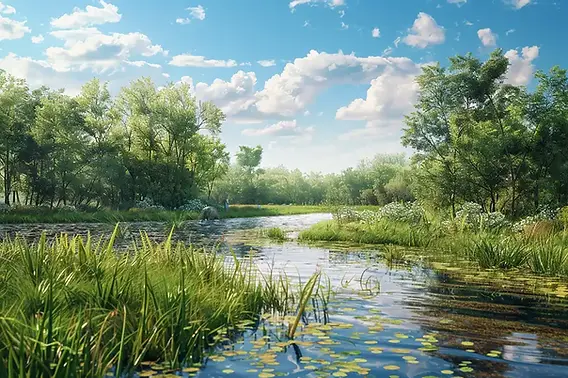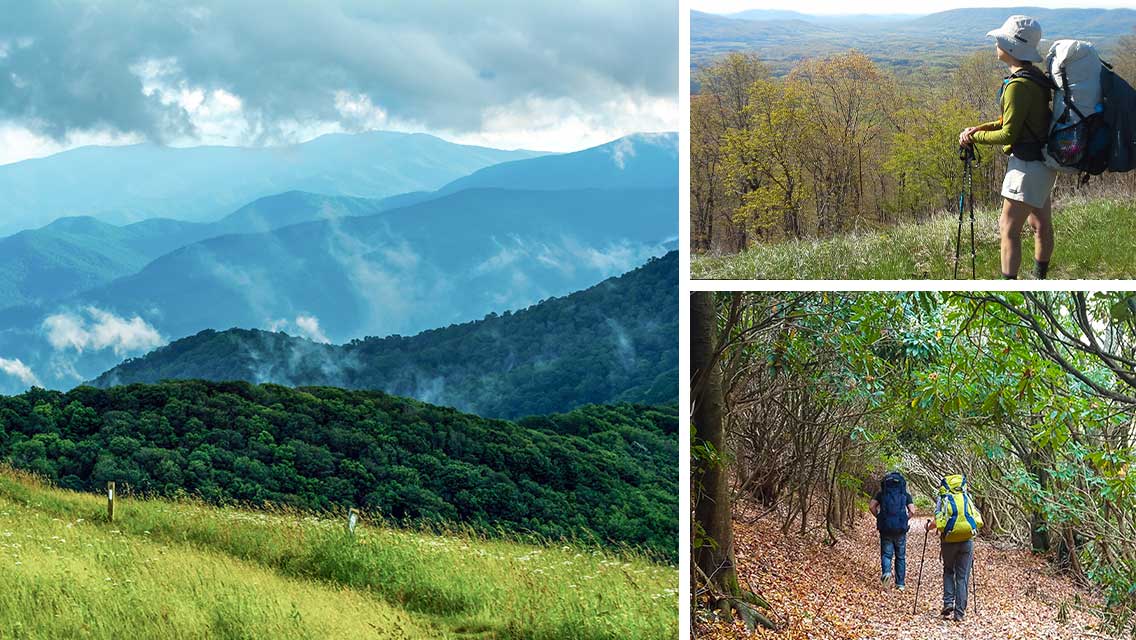
Conquer the Wild: A Comprehensive Guide to Hiking the Florida Trail
Florida, renowned for its sun-kissed beaches and vibrant theme parks, holds a hidden treasure for outdoor enthusiasts: the Florida Trail. This nearly 1,500-mile scenic trail traverses the state, offering a diverse landscape from the Everglades’ sawgrass prairies to the panhandle’s rolling hills. For those seeking an adventure beyond the typical tourist experience, the Florida Trail provides an unparalleled opportunity to immerse themselves in the state’s natural beauty. This article delves into the heart of the Florida Trail, exploring its unique challenges and rewards, with a special focus on swamp hiking, Florida wildlife encounters, the allure of thru-hiking, and the unique experience of hiking in the Everglades.

Introduction: Discovering the Untamed Florida
The Florida Trail, officially the Florida National Scenic Trail, is a congressionally designated trail that winds its way through some of the most ecologically diverse and challenging terrains in the United States. Established in 1983, the trail showcases Florida’s natural beauty, offering hikers a chance to experience the state’s varied ecosystems, from coastal forests and prairies to cypress swamps and clear springs.
Whether you’re a seasoned thru-hiker or a weekend warrior, the Florida Trail presents an unforgettable journey. However, it’s essential to understand the unique challenges that this trail presents, including navigating swampy terrains, respecting the diverse wildlife, and preparing for the often-unpredictable weather.

Planning Your Adventure: Essential Considerations
Before embarking on your Florida Trail adventure, careful planning is paramount. This includes understanding the trail’s geography, seasonal variations, necessary gear, and safety precautions.

Understanding the Trail’s Geography
The Florida Trail spans the length of the state, from the Gulf Islands National Seashore near Pensacola to the Everglades National Park. The trail is divided into sections managed by various agencies and volunteer organizations. Each section offers a different hiking experience, ranging from relatively easy walks to challenging backcountry treks.
- Northern Section: Characterized by rolling hills, pine forests, and clear springs.
- Central Section: Features extensive grasslands, cattle ranches, and numerous lakes and rivers.
- Southern Section: Encompasses the unique ecosystems of the Everglades, with its sawgrass prairies, mangrove forests, and abundant wildlife.
- Winter (November to February): The most popular time to hike, with mild temperatures, lower humidity, and fewer mosquitoes.
- Spring (March to May): Pleasant temperatures, but the risk of wildfires increases.
- Summer (June to August): Hot, humid, and prone to thunderstorms. Mosquitoes and other insects are abundant.
- Fall (September to October): Temperatures begin to cool down, but the risk of hurricanes remains.
- Navigation: Map, compass, GPS device, and knowledge of how to use them.
- Clothing: Moisture-wicking fabrics, rain gear, sun protection (hat, sunglasses, sunscreen), and insect repellent.
- Footwear: Sturdy hiking boots or trail runners, gaiters for swampy areas.
- Shelter: Tent, hammock, or tarp.
- Water: Water filter or purification tablets, hydration pack or water bottles.
- Food: Lightweight, non-perishable food items.
- First Aid: Comprehensive first-aid kit with blister treatment, insect bite relief, and pain relievers.
- Wildlife Awareness: Be aware of alligators, snakes, bears, and other potentially dangerous animals. Store food properly and avoid approaching or feeding wildlife.
- Heat Safety: Drink plenty of water, wear appropriate clothing, and avoid strenuous activity during the hottest parts of the day.
- Navigation: Stay on marked trails and use navigational tools to avoid getting lost.
- Communication: Carry a cell phone or satellite communication device and let someone know your hiking plans.
- Using Trekking Poles: Trekking poles can help you maintain balance and probe the depth of the water.
- Wearing Gaiters: Gaiters will protect your boots and ankles from mud and water.
- Paddling: In some areas, you may need to use a canoe or kayak to traverse deeper sections of the swamp.
- Snakes: Watch out for venomous snakes, such as cottonmouths and water moccasins.
- Leeches: Check for leeches after hiking in swampy areas.
- Water Quality: Avoid drinking untreated water from swamps.
- Snakes: Numerous species, including venomous snakes like cottonmouths, rattlesnakes, and coral snakes.
- Birds: A wide variety of birds, including wading birds, raptors, and songbirds.
- Mammals: White-tailed deer, black bears, bobcats, and various small mammals.
- Use Binoculars: Binoculars can help you spot wildlife from a distance.
- Respect Wildlife: Avoid approaching or disturbing animals.
- Learn Animal Tracks and Signs: Knowing how to identify animal tracks and signs can help you anticipate encounters.
- Never Feed Wildlife: Feeding wildlife can alter their behavior and make them dependent on humans.
- Store Food Properly: Store food in airtight containers or hang it from a tree to prevent attracting animals to your campsite.
- Report Aggressive Encounters: Report any aggressive encounters with wildlife to the appropriate authorities.
- Resupply Points: Plan your resupply points carefully, taking into account the distance between towns and the availability of supplies.
- Gear Selection: Choose lightweight, durable gear that is appropriate for the Florida climate.
- Training: Train for your thru-hike by gradually increasing your mileage and carrying a weighted pack.
- Mental Toughness: Thru-hiking can be mentally challenging, especially when faced with difficult terrain, inclement weather, or loneliness.
- Logistical Challenges: Resupplying, finding water, and dealing with unexpected issues can be logistically challenging.
- Connection with Nature: Thru-hiking allows you to immerse yourself in the natural world and experience the beauty of the Florida landscape.
- Community: Thru-hiking provides opportunities to connect with other hikers and share experiences.
- Off-Trail Hiking: Off-trail hiking is permitted in some areas of the Everglades, but it requires advanced navigational skills and a thorough understanding of the ecosystem.
- Slough Slogging: Slough slogging involves wading through the shallow water of the Everglades, offering a unique perspective on the ecosystem.
- Mosquitoes: Mosquitoes are abundant in the Everglades, especially during the wet season. Use insect repellent and wear protective clothing.
- Sun Exposure: The Everglades offers little shade, so protect yourself from the sun by wearing a hat, sunglasses, and sunscreen.
- Water Availability: Water is scarce in some areas of the Everglades, so carry plenty of water or a water filter.
- Travel and Camp on Durable Surfaces: Stick to established trails and campsites.
- Dispose of Waste Properly: Pack out everything you pack in, and dispose of human waste properly.
- Leave What You Find: Leave natural objects and cultural artifacts undisturbed.
- Minimize Campfire Impacts: Use a camp stove for cooking and avoid building campfires whenever possible.
- Respect Wildlife: Observe wildlife from a distance and never feed them.
- Be Considerate of Other Visitors: Respect the peace and quiet of the outdoors.
- Florida Hikes!: [Placeholder Link to Florida Hikes Website] – Great resource for trail information and planning.
- AllTrails: [Placeholder Link to AllTrails Florida Trail] – User reviews and trail maps.

Timing Your Hike: Seasonal Considerations
Florida’s climate plays a significant role in determining the best time to hike the trail.

Essential Gear: Preparing for the Elements
Proper gear is crucial for a safe and enjoyable hike on the Florida Trail.

Safety Precautions: Staying Safe on the Trail
The Florida Trail presents several safety challenges, including wildlife encounters, heat exhaustion, and navigational difficulties.

Confronting the Swamps: Mastering the Art of Swamp Hiking
One of the defining characteristics of the Florida Trail is its extensive network of swamps. Navigating these watery landscapes requires specialized skills and equipment.

Understanding Swamp Ecosystems
Swamps are wetlands dominated by trees and shrubs, often characterized by standing water or saturated soils. They play a crucial role in Florida’s ecosystem, providing habitat for a variety of wildlife and helping to filter water.

Techniques for Navigating Swamps
* Reading the Terrain: Look for higher ground, such as tree hummocks or natural levees.

Safety Considerations for Swamp Hiking
* Alligators: Be aware of alligators and avoid swimming or wading in areas where they are present.

Embracing the Wildlife: Encounters on the Florida Trail
The Florida Trail is home to a diverse array of wildlife, from alligators and snakes to birds and mammals. Encounters with these animals can be both exciting and challenging.

Common Wildlife Species
* Alligators: Found throughout the state, especially in swamps, rivers, and lakes.

Tips for Wildlife Viewing
* Be Quiet and Observant: Move slowly and quietly and pay attention to your surroundings.

Safe Wildlife Interactions
* Maintain a Safe Distance: Keep a safe distance from all animals, especially alligators and snakes.

Thru-Hiking the Florida Trail: A Journey of a Lifetime
Thru-hiking the Florida Trail is a challenging but rewarding experience that requires physical and mental endurance.

Planning a Thru-Hike
* Permits and Regulations: Obtain any necessary permits and familiarize yourself with the regulations for each section of the trail.

Challenges of Thru-Hiking
* Physical Demands: Thru-hiking requires significant physical exertion and can be hard on your body.

Rewards of Thru-Hiking
* Personal Growth: Thru-hiking can be a transformative experience, leading to increased self-confidence, resilience, and appreciation for nature.

Everglades Hiking: An Unforgettable Experience
Hiking in the Everglades is a unique experience that offers a glimpse into one of the most fascinating ecosystems in the world.

Understanding the Everglades Ecosystem
The Everglades is a vast, shallow wetland that covers much of southern Florida. It is home to a diverse array of plants and animals, including alligators, wading birds, and endangered species like the Florida panther.

Hiking Options in the Everglades
* Designated Trails: Several designated trails offer opportunities for hiking in the Everglades, ranging from short boardwalks to multi-day backpacking trips.

Safety Considerations for Everglades Hiking
* Alligators: Be extremely cautious around alligators and avoid swimming or wading in areas where they are present.

Leave No Trace Principles: Protecting the Florida Trail
It’s essential to practice Leave No Trace principles to minimize your impact on the environment and ensure that the Florida Trail remains pristine for future generations.

The Seven Principles of Leave No Trace
1. Plan Ahead and Prepare: Know the regulations and special concerns for the area you’ll visit.
Conclusion: Embracing the Challenge and Discovering the Magic of the Florida Trail
The Florida Trail is more than just a hiking path; it’s an invitation to experience the raw beauty and untamed wilderness of Florida. From navigating challenging swamps and observing diverse wildlife to embarking on a transformative thru-hike or exploring the unique ecosystem of the Everglades, the Florida Trail offers an adventure for every outdoor enthusiast. By preparing adequately, respecting the environment, and embracing the challenges, you can discover the magic of the Florida Trail and create memories that will last a lifetime.
Ready to start planning your Florida Trail adventure? Visit the Florida Trail Association website ([Placeholder Link to Florida Trail Association Website]) to learn more about trail conditions, maps, and volunteer opportunities.
Further Exploration:
Embrace the challenge, respect the wild, and discover the unparalleled beauty of the Florida Trail.